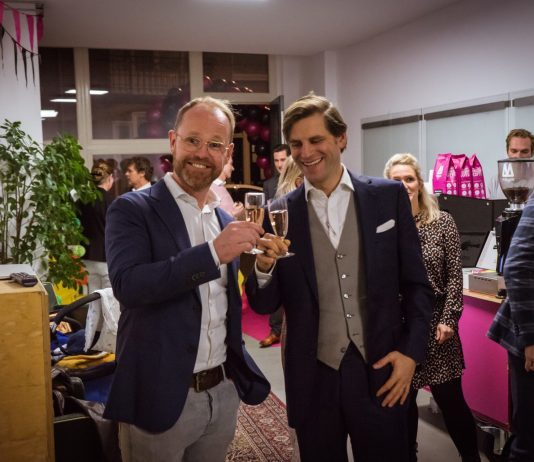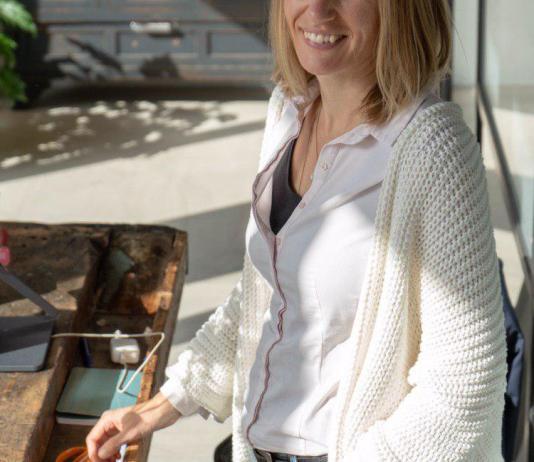Marcel van Marrewijk's Blog, page 30
February 4, 2020
How to choose the right business idea when you don’t know where to start

Starting a business is exciting. It’s an opportunity to build something you’re proud of. But what if you’re not sure what that looks like? In today’s entrepreneurial world, it can feel like anything is possible. So why does it sometimes feel like an uphill battle when we’re trying to decide on a good business idea?
We understand how confusing this part can be – the beginning phase isn’t always as easy as it looks! To help you put those entrepreneurial dreams into action, we’ve listed a few steps for choosing a successful idea.
1) Follow your curiosity
You might have heard the saying, “Follow your passion and you’ll find your purpose.” Sometimes we don’t know what our passion is. So how do we find something that could potentially be a profitable business idea?
Simple. We get curious.
When we’re curious, we gravitate towards an idea. We explore more and we get clearer on the things we enjoy doing – and the things we don’t. Your curiosity might begin as a simple weekend project, a hobby, or a side hustle. It could look like baking or taking photographs, fixing cars or building furniture in the garage. When you give yourself permission to try different things, you tap into ideas you might not have discovered otherwise.
2) Get clear on your motivation
What’s your why? Why do you want to start a business and why is it important to you. Knowing what drives you, will help you stay committed to your dreams and inspire others to get on board too.
Think about what motivates you. What is the real reason you want to become an entrepreneur? Get to the heart of your story and think about what this means to you personally – beyond the financial aspect. When you do this, you’re that much more likely to follow through.
“You can only become truly accomplished at something you love. Don’t make money your goal. Instead pursue the things you love doing, and then do them so well that people can’t take their eyes off of you.” – Maya Angelou
3) Make room to brainstorm
Schedule some time to map out possible business ideas in a quiet space. You don’t want to be interrupted or distracted. To get those creative juices flowing, get comfortable and have a few pieces of paper or a notebook available.
When we physically write things down, we’re able to look at the big picture and remember what we’ve written. Make a list of all the things you love, things you don’t enjoy, and things you’re good at.
If you find this last part tricky, think about what people ask you to do or help them with. For example, maybe you’re the go-to person in the family for solving IT problems. You might not even realise there’s a gap or space in the market for what you’re already doing.
4) Reach out, ask questions
Before you decide on a business idea, it’s important to do your research. This means asking questions and seeing what people are talking about. What are they struggling with? What are some of their biggest challenges?
For any business to be successful, there needs to be a demand for it. Here are five easy ways to start researching:
Use Google trends for popular searches
Join Facebook groups to see what people are asking about
Send emails to friends, colleagues, and family
Share Google surveys to get feedback
Create social media polls to gauge interest
5) Decide on the problem you’re solving
After the last step, you should have a better understanding of what business opportunity you could offer. If you’re still feeling confused, consider this: What can you make smarter or better? Remember, business isn’t about selling, it’s about solving a problem.
The last thing you want to do is launch a business where there isn’t a need for it. Do your homework, ask the right questions, listen, and build your business idea around solving a problem.
“To launch a business means successfully solving problems. Solving problems means listening.” – Richard Branson
And there you have it; five simple tips to help you choose a business idea when you’re starting out. All the best for putting those big dreams into motion, we know you’ve got this!
Seats2Meet South African Business Festival
Would you like to learn more about starting or developing a business? We’d love to meet you at our Seats2Meet South African business festival this month.
Join us in Cape Town for one, two, or three days of powerful talks and masterclasses that will influence and shape the way you do business in the future. Click here for more information or to book your spot!
The post How to choose the right business idea when you don’t know where to start appeared first on Seats2meet.
February 3, 2020
Nice2Meet: Marcel ten Brinke from the Share Council

Hi Marcel, could you please introduce yourself?
I am Marcel ten Brinke. A positive and enthusiastic man who loves personal development, enjoys his family and friends and wants to connect people and companies to jointly have more positive social impact.
I am originally a “tukker”, as Dutch people would say [coming from Dutch province Twente], I grew up in a small village of Vriezenveen. I completed the Human Resource study and lived in Ede, Utrecht and Curaçao. Now back in the Netherlands where Amsterdam is a very pleasant place to live.
In the past 13 years, I’ve been working as a business developer at corporate software companies such as ADP, AFAS and SAP, in the areas of payroll, human resource and enterprise resource planning. I was mainly focusing on supporting companies in innovation, changing management and working on optimization of companies’ internal and external processes.
How did you get to the Share Council?
At some point, I started to realize that I want to get “outside of the box”. When I came across Quintus Willemse, who later became my business partner, during a drink at the Industrieele Groote Club in Amsterdam, there were 3 topics that appealed to me the most. First, the idea that I had in my head for a long time: to give employees an opportunity to easily become co-owners of a company. This would increase their interest in company’s success and make them feel more affiliated with it.
Second, I found the software component and blockchain technology really cool and full of opportunities. Since I had 13 years of experience in this field and just bought my first bitcoin at that time, I wanted to bring it to the next level. What this innovative technology can do with our financial system is absolutely incredible and I look forward to it.
The third goal of mine was setting up my own company, a dream I had already for years.
So about 2 years ago those three things convinced me to jump into this new adventure called the Share Council.
What is the purpose/goal of the Share Council?
That every company in Europe has an opportunity to make co-ownership available to the team of specialists they want to grow their business with, in an easy and reliable way.

Could you tell us more about the creation of the Share Council and the way it works now?
The Share Council, formerly Stem software, was created out of necessity when we wanted to make co-ownership of the Foryard company for their employees. The bureaucratic complexity was challenging in terms of content, but also costly and time-wasting. So, we were looking for a suitable alternative. The main question was: how could we bind employees, investors and the community to the company without having to constantly reinvent the wheel and incur costs for lawyers and notaries?
The spiritual father of our system, Sjoerd van der Velden, came up with an opportunity of giving joint ownership an alternative form, whereby Quintus created the link to the system and the underlying blockchain technology to it. Share Council started with facilitating startups to grow their business with the right people. Since then many functionalities have been added whereby we can digitize old methods of certification and even connect entire communities with each other.

In the Share Council software you can cut shares into small pieces and make them easily available for your employees, investor or community. In the system you as an employer or employee have your own portal where you can see the value of your ownership in real-time. You can buy and sell those pieces. Administration on paper and Excel is no longer necessary, you no longer make mistakes when recording data. In addition, no lawyer or notary fees are incurred.
One of our ideals is that every company in Europe gives employees the opportunity to easily become co-owners of their company. Become responsible for the company together and profit together when the company achieves success. There are progressive companies that already set this up years ago and made certificates available to their employees. This is a beautiful old school structure that we are now translating with The Share Council into a digital form that gives everyone real-time insight into their certificates or share-holding.
How exactly does co-ownership work?
As a company you make a certain percentage of shares, let’s say 10%, available for your employees. We cut that 10% of your shares into small pieces so that no large amounts are needed to acquire a share, and everyone is given the opportunity to get a small piece of it. These pieces of your shares can be a million tiny pieces of 0.10 cents each. So the total value that the company makes available for joint ownership is 100 thousand euros.
Those are placed in a portfolio and made available for an “internal market”. In other words, only to the employees who work at that company. The employees and co-owners of the company make agreements on how much co-ownership they want to save or buy and see the value they have agreed on in their own digital wallet per certain period of time. In addition to the salary slip, you can save on a monthly basis for some co-ownership within the company which you are working for.
In that wallet, it is not only the number of pieces that you co-own, there is also a smart contract that has been adjusted exactly on your agreements with the employer. As a result, trade is also legally covered. That is only possible because the system is set up with our spiritual father, who is a Partner of a large law firm in Utrecht, Bruggink and van der Velden.
Could you explain how co-ownership i.e. in start-ups or in a network of connected people could be organized differently by using blockchain?
We see that technology is not important when solving a problem. What really is needed is a flexible solution to gather wishes and requirements and to apply them easily for startups, SMEs and accelerators. To make shares easy to trade and to be able to solve the current problems of administration and extra costs digitally with a real-time software solution.
We are unique that we use Blockchain technology and that we are one of the first companies to actually be “live” with it and have the right applications to turn the updated technology into a great added value. Of course, there are plenty of critics who say that we do not need blockchain technology at all for this solution. That’s completely right but here you could also compare a Nokia 6310 and an iPhone 11. Yes, it is true that you can use both for calling, but it is not only about calling, isn’t it? 
January 24, 2020
How Your Room Design Could Affect Your Mood and Help to Handle the Stress

After a long day at work, it is good to come back home and rest. However, you might find yourself not feeling as pleasant as you expected. One thing could be that you do not find your room relaxing. Your room design could be affecting your mood. However, if you fix several things about it, your room could help handle your stress. Several design issues could light up or dim your mood, namely choice of color, scent, lighting, the furniture and décor, photography, among other things.
Color Choice
When you first occupy your room, you might never feel there is anything wrong with the color of its interior. However, it should always matter to you because colors alter the mood. That is why every time you need to play with different hues to find the one that speaks to your most preferred mood. It might be proper to consult a color to mood chart, to make the right color choice for your room.
Examples include red for power, stimulation, and energy. You could use this in the dining area, upholstery, or bedroom. You could go for yellow if you are looking for something that gives you a happy, creative, and enthusiastic vibe. Use this on pillows, and throw-overs, among other preferred parts of your room. You could choose yellow for light-hearted, cheerful, and mentally stimulated, mostly for your kitchen. Green will communicate moods of nature, peace, growth, harmony, healing, and safety, among others. Green is appropriate for your office, bedroom, or bathroom. There are more colors available you could use. The way various colors make us feel is different. These colors come in different tones or degrees, play with them, and change the way you feel when you come home or your office. Moreover, change the color when you feel it is outdated.
The scent of Your Room
Smell is one of our most powerful senses. After a busy day, the last thing you expect is a smelly room. Smell not only kills your mood but that of anyone that may visit you. Therefore, you need to work on the smell of your room. A few steps could help with that, namely burning incense, candles, and oils. You may need to consider having flowers within your room. Try jasmines, gardenias, and violets. You also need to get rid of items that are making your room smelly. Shoes, wet clothes, trash, are just but a few.
Furniture and Décor
Your room’s furniture and decor are another design issue that could affect your mood. Have you found yourself placing everything next to the wall? Well, you have been creating dead space, even worse negative energy. Placing everything next to the wall is an asymmetrical way of doing things. A simple way of making your room unpleasant is to avoid arranging things in their most typical form. Use both decor and furniture to lighten up your room by mixing them with various vintages, textures, and variety.
Talking about different, start incorporating oval, circular, and arched shapes for furniture and décor. Use unusual artwork and decor such as brass, iron, stone, and metal to help bring out a strong and independent mood.
Photography
With a well-painted room, you need to give some life to the walls. One way of doing it is through photos. When talking about the mood, you need to think about using pictures of people or things that mean something to you. Use a photo of a partner, family member, a dream house, or a car. Remember, it is all about avoiding getting moody just from the ambiance of your room. For photography, you may also need to consider the frames you will use. There are multiple pocket-friendly frames you could go for in case of anything.
The Lighting
Poor lighting in your room could bring an element of dullness in your room. Good lighting offers some harmony and balance. Pay attention to skylights and windows. Fix broken windows and cover them with blinds or curtains. You could be working on WriteScout and need not just the coziness but also some comfort you are doing. Curtains bring out an element of privacy and coziness you might crave to achieve.
The above demonstrations are a depiction of how your room design could affect your mood. Moreover, a room that helps handle stress is important too. A few implementations could help with that.
Tending to your green plants and flowers
As much as they may make your room appear beautiful, the act of tending to them is quite therapeutic, especially when stressed.
Setting aside time to engage your senses
With all the good things, like a TV set or video games your room may have, you need to spend some time with yourself. For your eyes, have some photography book, album to look at, or read your favorite lifestyle blog. Work on your flower and plant vases for your sense of smell and touch, and play some music for your senses.
Your room design does affect your mood a lot. If there is something you can about do it, then you need to get to the action. Remember, a good room design could help you deal with a stressful time.
The post How Your Room Design Could Affect Your Mood and Help to Handle the Stress appeared first on Seats2meet.
Top 5 online marketingtools die het leven van een digital marketeer makkelijker maken

Wellicht heb je je tijdens je studie en werk veel kennis op gedaan van digital marketing, maar desondanks kan je niet altijd achter waardevolle informatie komen. Hiervoor heb je online tools nodig. Met behulp van de onderstaande tools kom je achter belangrijke zoektermen waar je op moet focussen, weet je per locatie hoe hoog je rankt in Google en weet je hoe je je laadsnelheid moet optimaliseren. In dit korte artikel lees je 5 relevante online marketing tools die je werk naar een hoger niveau tillen.
1.) De multifunctionele tool Mangools
Mangools is een tool om je online vindbaarheid te verbeteren. Mangools is een SEO tool met diverse functionaliteiten, zoals KWfinder, waarbij je zoekwoorden ontdekt met een hoge zoekvolume en een lage concurrentie. Verder heb je ook SERP Watcher, waarbij je de real time je rankings in de gaten houdt. Mangools biedt de pakketten basic, premium en agency aan. De voorkeur is bij jou!
2.) Snel, sneller, snelst
Zonder dat je het in de gaten hebt haak jij af als websites te lang laden. Wist je dat bij Amazon de omzet met 1 procent is gestegen nadat de laadsnelheid met 100 milliseconden verbeterde? Uit ervaring van LEQUAL weten wij ook dat de laadsnelheid een belangrijke factor is in de stijging van je omzet. Gebruik dan ook online tools om je snelheid te meten. Google Page Speed is een tool die niet alleen je laadsnelheid meet, maar ook adviezen aandraagt hoe je je snelheid kan verbeteren. Superhandig!
3.) Content is king
Contentking heeft een algoritme, die achterhaalt welke pagina’s het belangrijkst zijn. Deze tool ontdekt problemen die jij soms over het hoofd ziet. Op een dashboard zie je een overzicht van de verbeterpunten. Deze hoef je slechts een keer in te stellen. Ook een handige functie is dat hij bij updates controleert of het inhoudelijk SEO-vriendelijk is. Zo verlies je niets meer uit het oog!
4.) Bezoekersgedrag analyseren
Altijd al het gedrag van je bezoekers op je website willen analyseren? Met Hotjar kan het! Met behulp van heatmaps en scrollmaps zie je in een oogopslag hoe de bezoekers zich gedragen op je website. Soms vraag je je bijvoorbeeld af waarom mensen afhaken op je website. Hotjar laat je waardevolle informatie zien. Zo kom je er bijvoorbeeld achter dat mensen steeds op een bepaalde pagina wegklikken. Dat vergt dus actie!
5.) Eenvoudig e-mails versturen
Wil je je klanten ook via de e-mail bereiken? Dan is Mailchimp een handige programma. Met Mailchimp maak je, ook als je niet zo handig bent met computers, je eigen e-mail template. Verder kan je ook automatisch e-mails versturen, bijvoorbeeld wanneer iemand zich wilt inschrijven voor de nieuwsbrief. Tot slot: Met Mailchimp kan je ook A/B-testen (twee varianten met elkaar vergelijken op het beste resultaat). Zo kom je bijvoorbeeld achter de beste e-mailindeling en lay-out. Ideaal!
Hopelijk ben je na het lezen van deze online tools geïnspireerd geraakt. Tools zijn er genoeg, maar de interpretatie is echt aan jou!
The post Top 5 online marketingtools die het leven van een digital marketeer makkelijker maken appeared first on Seats2meet.
January 21, 2020
Knowledge sharing is the future of work in South Africa

Imagine this: It’s 8 am on Friday at a local Woolworths cafe. There’s an aroma of freshly brewed coffee and energy of ambition in the air. Freelancers, entrepreneurs, sales reps, and contractors sit detached in heavy concentration; notebooks open, laptop screens visible in every corner. Welcome to the millennial age.
The way we work is changing.
For emerging millennials in the workplace, traditional standpoints are becoming a thing of the past and flexibility is the goal of choice. Specifically, creating a better work-life balance and adopting habits to prioritise health and well-being.
When you consider this progressive mindset and our ever-evolving technology, the possibilities for growth seem endless. However, with that being said, we still have a long way to go when it comes to fully embracing a new way of working. Change often fuels a sense of uncertainty and uncovers questions we need to address. What does this shift mean for businesses and self-employed professionals?
And more importantly, how does it impact our already fragile economy?
One thing we do know with absolute certainty: millennials and Gen Z are the future of the workplace. Experts predict that in 2020, millennials will account for 35% of the global workforce and Gen Z will make up 24%. That’s more than half the global workforce population. This indication alone tells us that businesses and professionals need to get on board with a more modern way of working – one that includes the rapid expansion of technology.
Paving the way forward
Digital transformation and the millennial mindset are our present and the future so best we learn to adapt fast. To get a true sense of our economic reality, we only need to look at once-thriving Forever 21, Macy’s, and GAP. These are a handful of international chains that have recently closed their doors for good. And yet, it’s not only global outlets that are affected; Edgars in Rosebank mall has turned their lights out and Massmart (which owns Game, DionWired, and Makro) may well be closing 34 stores.
What’s known as the retail apocalypse has become a new normal as we transition into a landscape of AI and technological advancements. A time where convenience and accessibility outweigh in-store shopping and experiences are preferred – often expected – as part of the consumer journey.
But what does this mean for South African businesses as a whole, beyond the retail sector?
Simply put, the traditional way of working will soon become a thing of the past. Brick and mortar buildings are still favoured by many CEOs in spite of studies highlighting the advantages of flexible working – most importantly, improved productivity. Why is this relevant? To put it bluntly, our economy is struggling. South Africa’s unemployment rate is projected to be 29% this year. Given that millennials and Gen Z are the future, it seems a huge part of the problem lies with an outdated way of doing things.
The future of work and a support-based culture
Old fashioned standpoints, corporate structures, and hierarchies are falling away on a global level. This substantial shift has opened the door to a diverse, inclusive, and technology-enabled way of living and working. The future of work encompasses collaborative problem solving, social learning, and contributing to a support-based culture. These elements are fundamental to the growth of a thriving economy.
So how do we as South Africans, implement change in the way we work? It starts with education – beyond a schooling system. We need to adopt a mindset of becoming life-long learners in an ever-changing digital age. This means continuously re-examining our skills and upskilling when they become irrelevant. As the working landscape shifts, so too is the way we absorb information.
Skills development is a crucial part of professional growth, specifically for millennials.
These digital entrepreneurs and innovators prefer social learning to fixed learning schedules or booked classrooms. Outdated ways of learning impact the way we think about, value, and do work. We cannot expect a thriving economy when the focus for work-based skills development is vastly underrated or ignored.
Let’s consider a few more stats: 70% of Africa’s population is under the age of 30 and South Africa’s youth population stands at around 35.7%. This is a substantial opportunity for skills development, growth, and advancement. Employment openings such as entrepreneurship and a better attitude towards changes at work increase with the right training. This in turn, positively impacts economic growth and improves society in general.
In business, knowledge sharing is the free exchange of insights, expertise, and experiences used to empower individuals and benefit the company as a whole.
What began as water-cooler moments of knowledge-sharing in the early 1900s, has evolved into mass media consumption. News and other content are now available at the click of a button. However, this single way of learning and consuming information does little to contribute on a greater level to an economy desperate for mass skills development. What we need is a more knowledge-sharing culture that is inclusive, diverse, and adaptable. In a world driven by change, learning is the only permanent we have for growth and relevancy.
Knowledge sharing is the key
Today, the way of learning and exchanging information is characterised by change, collaboration, interconnectivity, and active engagement. This looks like peer-to-peer learning, virtual collaboration rooms inside organisations, and the progressive evolution of technology.
“Technology can help more people and more broadly than any other industrial revolution,” Satya Nadella, CEO of Microsoft said at 2016’s World Economic Forum. “It doesn’t mean everyone’s got to be a computer scientist; digital technology can, in fact, bring skills to a much more under-skilled population because of their ease of use and the ease of access to technology.”
As mentioned, an economy is as strong as its skills-developed people.
Without ongoing learning and knowledge sharing, our economy stays stagnant – or worse, it declines. While many employees have the advantage of in-house company training, entrepreneurs and business owners often feel isolated and overwhelmed when it comes to upskilling. How do they improve their skills in the right areas while still experiencing the same camaraderie as their employed friends? The answer lies in learning and giving – a cycle of never-ending knowledge-sharing that evolves just as quickly as our technology does.
“As more technology professionals devote more time to mentoring, they will sow the seeds of a future workforce capable of using internet connections to change the world.”– Tae Yoo, Senior Vice President of Corporate Affairs at Cisco Systems Inc.
The key is being connected with like-minded people and a community where relevant information and problem-solving are shared. When we feel connected, we are that much more empowered to grow individually and professionally. And this is where our economy could dramatically shift. Imagine business owners feeling empowered to bring on new employees with this modern-day approach to learning, all the while being part of a supportive network.
Knowledge sharing is the future.
It is how we work better and share responsibility for creating change in the South African and global economy. Seats2Meet is proud to be part of that solution.
We designed a social business ecosystem to connect people, share knowledge, and grow stronger together. Our S2M Passport facilitates virtual environments and physical co-working locations around the globe, including South Africa. It is an infinite system of business support from social mentorship and coaching to relevant events and training. Seats2Meet South African users gain access to more than 178 locations, 1784 innovative workspaces and 363 global meeting places and, most importantly, thousands of entrepreneurs worldwide from which to tap into for information, collaboration, and business opportunities.
An affordable business opportunity
If you are entrepreneurial-minded and looking to start a business, you can easily set up your own hot-spot co-working space for entrepreneurs to work together. All you need is a welcoming attitude, a space for a few desks, electricity, decent Wi-Fi connection, good coffee, and of course – the unique Seats2Meet booking system. You will get access to ongoing support and global connections.
For more information on how to start your own business opportunity, contact us on info@seats2meetsa.co.za.
Cape Town Seats2Meet business festival
Join us on the 20th, 21st and 22nd of February 2020 when we host the first South African Seats2Meet business festival in Cape Town. This is a festival about the future of work, finding work, becoming an entrepreneur, and creating a balance between work and life.
What you can expect:
Daily masterclasses, exciting workshops, local and international speakers, and a few surprises are on the lineup. If you are an entrepreneur or business owner, this is one event you don’t want to miss. Click here to find out more or to book your spot.
Details:
Dates: 20, 21, 22 February 2020
Time: 09h00 – 13h30
Cost:
1 Day: R440
2 Days: R630
3 Days: R890
The post Knowledge sharing is the future of work in South Africa appeared first on Seats2meet.
January 16, 2020
5 Business Trends to Look After in 2020

As the new decade starts rolling full speed, the number of predictions what the year ahead holds is growing in geometrical progression. We ask ourselves, what does the future hold? With technology becoming ever more present in our lives, it changes fundamentally the way people interact with each other. Therefore, we have also decided to look into a crystal ball of the expert opinion and talk about some of the trends in the future of business in the coming year.
1. Mobile apps transform service industry
Already, there are many services which are mostly delivered through apps. However, in 2020 the industries as diverse as mining and agriculture sectors are set to follow the lead. As many as 1.96 million apps are featured in the App Store and 2.46 million apps are available on the Google Play (as of the second quarter of 2019).
The world is heading towards digitalisation, and mobile apps are following the suit, becoming an integral part of the digital ecosystem. Both tech giants and smaller companies are realising an importance of this trend, incorporating apps in their overall business strategy. Apps are used for companies to create awareness, deliver personalised content, increase customer engagement and increase sales. If you were thinking about using mobile apps in your business, it’s time to start acting now.
2. Robots substituting humans in some of the professions
While we are still far away from a futuristic world where robots take up our place in it, machines are already taking up a large number of tasks, from cashier’s to inventory accounting. This means that many people will be forced to change their careers as their jobs are becoming automated.
This poses a two sided challenge for the future of the employment – on the one hand, robotisation will decrease unemployment as operations are becoming increasingly high tech. This also poses a challenge of finding enough skilled workers for newly established high skilled positions.
On the other hand, new automated solutions become capable of covering a very broad range of tasks, which poses a thread of substituting not only the most routine tasks, but also relatively high-paid jobs.
3. More emphasis on personalised customer service
Customers no longer agree to be treated as simply a number, and demand a personalised service from companies. According to Gartner, smart use of personalisation increases profits by up to 15%. Companies with generic offering and advertisement will continue to further loose profit, as the amount of noise and available options further increases.
As technologies continue to develop further, companies get at their disposal ever more tools which help to achieve personalised customer experience, for example, with the help of chatbots and virtual agents. Moreover, at the moment there are more opportunities than ever to offer personalised service across multiple touch points by leveraging consumer insights and data.
Still in doubt whether it’s worth investing your time and effort into creating a more personalised customer experience? Then let the numbers speak for themselves.
59% of online shoppers believe it is easier to find more interesting products on a personalised online retail store
56% are more likely to return to a site that recommends products
53% believe that retailers who personalise the shopping experience provide a valuable service
45% are more likely to shop on a site that offers personalised recommendations
57% of online shoppers are OK with providing personal information as long as it benefits them
77% would trust businesses more if they explained how they use personal information
(Source: Invesp)
Overall, personalisation leads to 59% increase in ROI, which makes its’ benefits apparent. Time to start thinking of the ways of giving customers precisely what they want!
4. Remote work is ever growing
Among the many benefits of remote work, it allows small businesses to scale up faster, as it eliminates the overhead cost related to office expansion. Also, it makes it easier than ever to hire talent from abroad, making the available talent pool for remote companies virtually indefinite.
Luckily, as we reach a new decade, more and more companies start to realise these benefits. And by this point, it’s not only small tech startups – some of the largest organisations, such as IBM, offer remote positions to its employees. Moreover, the number is expected to increase to 50 percent by 2020.
This increase is made possible by technological progress. With tools such as virtual employees, project management and other mechanisations. These tools help to overcome one of the major concerns of remote work opponents – the lack of accountability and clarity on tasks performed by these employees.
Hence, it can be predicted that remote work will keep rising steadily and organisations will have to seriously take it into consideration when establishing their overall talent strategy.
5. Voice is taking over
Smart speakers such as Alexa and Google Home have been popular for a while already. Thanks to this, the number of voice searches is going up steadily too. Businesses have to take it into account when building their overall strategy and make sure that their content is voice optimised.
As of 2014, Google had conducted a research which found that that 55% of teens and 41% of adults in the US used voice search more than once per day. This number has been steadily on a rise since then. Subsequently, this results in an increase in natural voice language search with questions as a search query. Search Engine Watch reports that usage of search queries starting with words “who,” “what,” “where” and “how” increased 61% last year.
Therefore, not optimising your website for the voice search will cost you a significant amount of traffic in the future. Keep that in mind when creating content and make sure that you use conversational language and how people normally speak when conducting searches.
The post 5 Business Trends to Look After in 2020 appeared first on Seats2meet.
De toekomst van werk, hoe ziet die er uit?

 Photo by Alesia Kazantceva on Unsplash
Photo by Alesia Kazantceva on UnsplashWerk, het is zo’n groot deel van je leven, sta je er wel eens bewust bij stil wat je eigenlijk doet elke dag? Of eigenlijk meer hoe je het doet en waarom? De toekomst van werk gaat drastisch veranderen de komende jaren, maar wat is er voor nodig deze verandering te realiseren?
De toekomst van werk
Als je in loondienst werkt is de kans groot dat je een leidinggevende hebt die voor je besloten heeft wat er in je functie-omschrijving staat. Houd jij je netjes elke dag aan alle taken die je moet doen en werk je keurig lijstjes af? Of denk je ook wel eens na of dingen niet handiger kunnen? Krijg je de ruimte om te reflecteren, te innoveren en te creëren?
In mijn ogen zijn deze facetten belangrijk in elke baan en worden ze steeds belangrijker. Niet alleen als je ondernemer of kenniswerker bent, ook als je werkt in de zorg of het onderwijs. Ook al lijken deze banen veeleisend en gefocust op regels en to do lijsten, je kunt er voor zorgen dat je baan beter bij je past en ruimte maken voor reflectie, innovatie en creatie.
Als je ondernemer of manager bent, helpt het om hiervoor ruimte te maken. Niet alleen voor jezelf, zeker ook voor de mensen met wie je werkt.
Elk mens weet dat hij bepaalde verantwoordelijkheden heeft. En het is niet zo dat je die verantwoordelijkheden vergeet op het moment dat je de deuren van je werkgever binnenloopt. Al lijkt het er soms wel op. Door lijstjes af te werken en je te houden aan regels, stomp je af en ben je alleen nog maar bezig met wat moet en niet met dat waar je misschien wel veel beter in bent.
Tijd maken voor reflectie
Het heeft dus zin om tijd te maken voor reflectie. Om de stilte op te zoeken, te mediteren, in de natuur te zijn, te wandelen of te schrijven. Stilte is essentieel, even alleen en niemand anders om je heen. Alleen dan kun je terug naar je eigen kern, om vervolgens te zien hoe jij vanuit die kern waarde kunt toevoegen aan het bedrijf waar je werkt. Als je dan nieuwe inzichten krijgt en ziet dat dingen anders kunnen, kun je ruimte maken voor innovatie.
Verandering stimuleren
De essentie van ons mensen is dat we altijd dingen anders willen dan ze zijn. Dat zie je goed aan het feit dat we vroeger naakt op de prairie leefden en dat vergelijkt met hoe we er nu uitzien en hoe onze omgeving zich heeft geëvolueerd. Je kunt dit stuk van ons mensen dus niet wegstoppen. Verandering hoeft niet altijd te betekenen dat iets groter of beter moet. Het kan wel betekenen dat het efficiënter kan of gemakkelijker. Of dat je besluit dingen niet meer te doen, omdat ze eigenlijk niet werken, maar gedaan worden omdat het altijd al zo was.
Creatie motiveren
 Photo by LinkedIn Sales Navigator on Unsplash
Photo by LinkedIn Sales Navigator on UnsplashAls je ziet dat het anders kan, dat je het anders wilt. Wordt het ook tijd om het anders te doen. Dat betekent ruimte maken voor creatie. Niet alleen maar elke dag je lijstjes afwerken, maar ook ruimte maken om nieuwe dingen te creëren. Dit kan door wekelijks een creatiedag in te plannen of elke dag 1 of 2 uur.
Het effect?
Als bedrijf ga je groeien, je gaat meer doen in minder tijd. Mensen worden blijer, energieker en gaan met meer plezier naar hun werk. Ze krijgen hun eigen verantwoordelijkheden weer terug en dat heeft een extreme impact op medewerkersgeluk èn op het geluksgevoel van klanten en leveranciers. Als jij blij bent, dan straalt dat op iedereen in en om je heen af, dus dat kan alleen maar ten goede komen van het bedrijfsresultaat!
Denk je mee?
Het is mijn overtuiging dat we aan de vooravond staan van een nieuwe manier van werken. En die gaat over eigen verantwoordelijkheid nemen. Of je nu als zelfstandige werkt of in loondienst. Iedereen heeft de verantwoordelijkheid om een bijdrage te leveren.
Tijdens het Blue Monday festival op 20 januari kun je meepraten over dit onderwerp. In een inspiratiesessie gaan we op zoek naar de nieuwe essentie van werk en hoe we met elkaar kunnen realiseren dat dit werkelijkheid wordt. We kijken in deze sessie naar mogelijkheden en laten voor heel even alle twijfels en belemmeringen weg, we gaan op zoek naar de ultieme vorm van werk voor de toekomst!
The post De toekomst van werk, hoe ziet die er uit? appeared first on Seats2meet.
January 14, 2020
Eén arbeidsongeschiktheidsvoorziening voor alle werkenden

Namens ruim twintig organisaties van zelfstandigen en modern werkenden stelt de Werkvereniging aan minister Koolmees voor de werknemersverzekering voor volledige arbeidsongeschiktheid (IVA) open te stellen voor zelfstandigen en af te zien van een aparte regeling voor zzp’ers.
“Mensen wisselen steeds vaker van werk- en contractvorm. Het wordt tijd dat ons sociale zekerheidsstelsel de werkenden als uitgangspunt neemt en niet de arbeidsvorm. Vandaar onze wens om te komen tot één stelsel met een basisvangnet voor onoverzienbare risico’s. Door de IVA open te stellen voor alle werkenden bij arbeidsongeschiktheid zetten we een eerste stap naar een sociaal zekerheidsstelsel dat past bij de hedendaagse arbeidsmarkt”, aldus Roos Wouters van de Werkvereniging.
“Niemand die met werken in zijn levensonderhoud voorziet, kan zelf het financiële risico dragen bij blijvende en volledige arbeidsongeschiktheid”, aldus voorzitter Charles Verhoef van Zelfstandigen Bouw. “Maar veel zzp’ers kunnen zich daarvoor niet verzekeren. Daarom willen wij de IVA uitbouwen tot een basisregeling voor alle werkenden, waaraan iedereen die meer dan 1225 uur per jaar werkt verplicht deelneemt.”
Voor mensen in loondienst betalen de werkgevers – net als nu – de premie. Voor zelfstandigen wordt dat de opdrachtgever. “Ook zou de overheid voor de financiering dat deel van de zelfstandigenaftrek kunnen gebruiken dat nu al wordt gekort”, aldus Lex Tabak van SoloPartners, voor zzp’ers in de zorg.
De organisaties zien niets in de plannen voor een verplichte arbeidsongeschiktheidsverzekering voor zzp’ers. Daar is geen draagvlak voor, het is niet te betalen en het past niet bij de moderne arbeidsmarkt. Die bestaat al lang niet meer vooral uit werknemers die hun hele carrière in loondienst blijven. Er is een grote verscheidenheid aan werkrelaties en gedurende hun loopbaan wisselen mensen daartussen.
De in totaal 22 organisaties zijn van opvatting dat het tijd wordt dat dit zijn vertaling krijgt in een nieuw stelsel van arbeidswetgeving en sociale zekerheid. Daarin moeten werkenden het uitgangspunt zijn en niet het contract dat zij hebben. De Werkvereniging gaat zich namens dit collectief van modern werkenden inzetten om gezamenlijk tot een fundamentele herziening van het sociale stelsel te komen.
Voor verdere informatie:
Joke Licher, persvoorlichter tel: 0622245259
Roos Wouter, de Werkvereniging, tel: 0624668611
Charles Verhoef, Zelfstandigen Bouw, tel: 0610955086
Lex Tabak, SoloPartners, tel: 0622566790
The post Eén arbeidsongeschiktheidsvoorziening voor alle werkenden appeared first on Seats2meet.
January 13, 2020
Nice2Meet: Irene van Gent, a Writer, Storyteller and Inspirator
 Could you please introduce yourself?
Could you please introduce yourself?I am Irene, writer and inspirator. I live in Utrecht and am a remote worker. I have been self-employed for almost 15 years now and I see this as a way to be free. I have created my freedom by doing a lot of different things. Most important thread through my life is finding a way to live according to my own rhythm while the whole world is running like crazy 
S2M Blue Monday Festival

Maandagmiddag 20 januari 2020 host Stichting DeBroekriem samen met Seats2meet Utrecht CS het Blue Monday Festival over het thema “Trends in werk”.
Met een uitgebreide line-up qua sprekers wordt het een inspirerende middag vol nieuwe inzichten. Het is de derde editie van dit festival. Hieronder een sfeervideo van één van de vorige edities.
Eén van de spreker op 20 januari is Danny Stigter van Stichting DeBroekriem. Als vrijwilligerscoordinator is het expert op het gebied van community management. DeBroekriem is een landelijke vrijwilligersorganisatie. Met een team van 75 vrijwilligers organiseert DeBroekriem in heel Nederland netwerkbijeenkomsten, deze community zorgt ervoor er maandelijks 100 mensen succesvol uitstromen naar een betaalde baan. Bij de bijeenkomsten werken deelnemers namelijk aan hun netwerk- en sollcitatieskills.
Nieuwsgierig naar het complete aanbod qua sprekers op het Blue Monday Fesitval? Kijk op https://passport.seats2meet.com/event...!
The post S2M Blue Monday Festival appeared first on Seats2meet.



